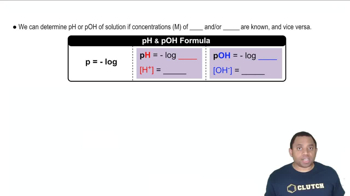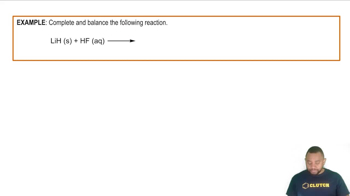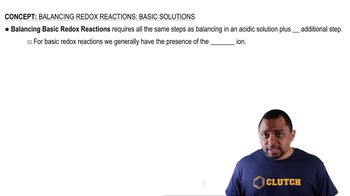Here are the essential concepts you must grasp in order to answer the question correctly.
pH and pOH
pH is a measure of the hydrogen ion concentration in a solution, defined as pH = -log[H3O+]. pOH, on the other hand, measures the hydroxide ion concentration, calculated as pOH = -log[OH-]. At 25 °C, the relationship between pH and pOH is given by the equation pH + pOH = 14, which helps classify solutions as acidic (pH < 7) or basic (pH > 7).
Recommended video:
Ion Product of Water (Kw)
The ion product of water, Kw, is the equilibrium constant for the self-ionization of water, defined as Kw = [H3O+][OH-]. At 25 °C, Kw is equal to 1.0 x 10^-14. This relationship allows us to calculate the hydroxide ion concentration [OH-] from the hydronium ion concentration [H3O+] using the formula [OH-] = Kw / [H3O+].
Recommended video:
Production of Hydrogen Example
Acidic and Basic Solutions
A solution is classified as acidic if it has a higher concentration of hydronium ions [H3O+] than hydroxide ions [OH-], resulting in a pH less than 7. Conversely, a basic solution has a higher concentration of hydroxide ions, leading to a pH greater than 7. Neutral solutions have equal concentrations of both ions, typically at pH 7. Understanding these classifications is essential for interpreting the results of the calculations.
Recommended video:
Balancing Basic Redox Reactions
 Verified step by step guidance
Verified step by step guidance

